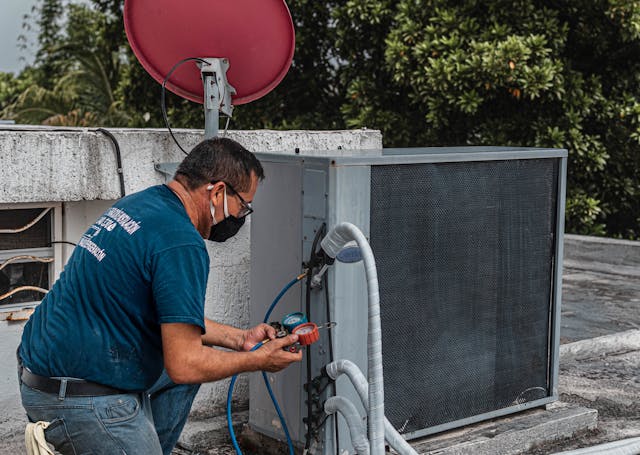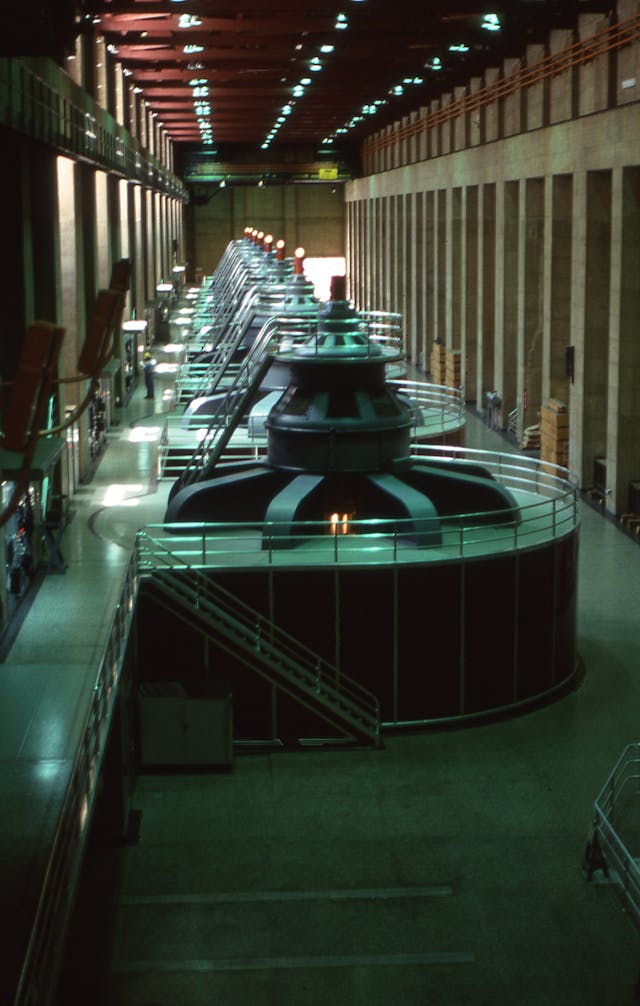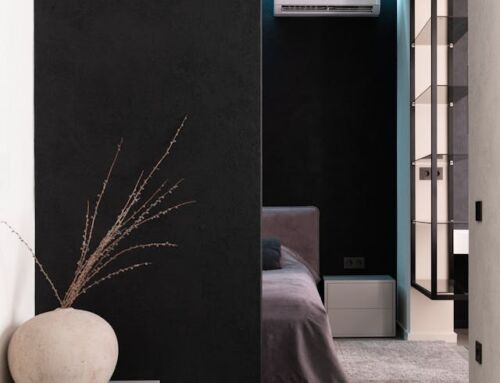Right, so you’re looking into HVAC systems for your office building? That’s a big decision, and not one to be taken lightly. A comfy office is a productive office, and nobody wants to swelter in summer or shiver in winter. Plus, getting the right system can save you a packet on energy bills. So, which HVAC system is best for office building? Let’s dive in.
First things first, there’s no one-size-fits-all answer. The “best” system depends on a bunch of factors specific to your building, like its size, layout, how it’s used, and even where it’s located. Think about it – a small office in Takapuna will have different needs compared to a multi-story building in the Auckland CBD.
Here’s a Rundown of Popular HVAC Systems for Office Buildings
Here’s a rundown of some popular HVAC systems for office buildings and what makes them tick:
1. Variable Refrigerant Flow (VRF) Systems
These systems are super flexible and efficient. Imagine individual air conditioning units for each zone or room in your office, all connected to a central outdoor unit. That’s VRF in a nutshell.
Key Advantages: Individual zone control, energy efficiency, quiet operation.
Considerations: Higher initial cost compared to some other systems, requires specialised installation and maintenance.
Best Suited For: Larger buildings with varying occupancy patterns, allowing for customised temperature control in different areas.
2. Rooftop Units (RTUs)

These are common for larger office buildings. As the name suggests, they sit on the roof and pump conditioned air throughout the building via ductwork.
Key Advantages: Cost-effective installation and maintenance, suitable for large spaces.
Considerations: Can be less efficient than VRF systems, particularly if zoning is required, takes up roof space.
Best Suited For: Large single-zone buildings or buildings where zoning isn’t a primary concern.
3. Heat Pumps
Heat pumps are a good option for smaller offices or specific zones within a larger building. They work by transferring heat between the indoors and outdoors, providing both heating and cooling.
Key Advantages: Energy-efficient, environmentally friendly, provides both heating and cooling.
Considerations: Capacity limitations for very large spaces, performance can be affected by extreme temperatures.
Best Suited For: Smaller offices, individual zones within larger buildings, or as supplemental heating/cooling. An excellent choice for the often mild Auckland climate.
4. Chilled Beam Systems
These are a bit more specialized. They circulate chilled water through pipes in the ceiling, which cools the air through convection.
Key Advantages: Very energy-efficient, quiet operation, aesthetically pleasing.
Considerations: Not ideal for humid climates, can be more expensive to install than other systems.
Best Suited For: Offices in dry climates, spaces where quiet operation and aesthetics are important. Less suitable for Auckland’s occasionally humid summers.
5. Geothermal Systems
These systems use the earth’s constant temperature to heat and cool buildings.
Key Advantages: Incredibly energy-efficient, environmentally friendly, long lifespan.
Considerations: High initial installation cost, requires suitable land conditions.
Best Suited For: New construction projects where the initial investment can be factored in, buildings with a focus on sustainability.
Which HVAC System is Best for Office Building? Key Considerations
Here’s a more detailed look at the factors you need to consider when choosing an HVAC system:

Building Size and Layout
A sprawling office complex will have different needs than a small, compact office. VRF systems are often a good choice for larger buildings with multiple zones, while heat pumps might be sufficient for smaller spaces. Consider the number of floors, the arrangement of rooms, and the overall square footage.
Occupancy Patterns
How is your office used? Are there areas that are heavily used during the day and others that are mostly empty? This impacts your heating and cooling needs and can influence the choice of system. VRF systems allow for individual zone control, optimising energy use. Think about peak occupancy times and how different areas are utilised.
Climate
Auckland’s climate is generally temperate, but we still get our fair share of hot summers and cool winters. Consider a system that can handle both effectively. Heat pumps are a good all-rounder, while chilled beam systems may struggle with humidity. Factor in the specific microclimate of your building’s location.
Budget
HVAC systems come with varying price tags. RTUs are typically more affordable to install, while geothermal systems require a higher initial investment. Factor in long-term running costs too – energy-efficient systems like VRF and heat pumps can save you money in the long run. Conduct a thorough cost-benefit analysis.
Maintenance Requirements
All HVAC systems require regular maintenance. Consider the accessibility of the system for maintenance and the availability of qualified technicians in your area. Choose a system with readily available parts and expertise. For Auckland businesses, Prolectrix offers a range of building services, although not extensively detailed here.
Indoor Air Quality
Good indoor air quality is essential for a healthy and productive workspace. Look for systems with good filtration and ventilation capabilities. Consider features like air purifiers and humidity control.
Going Beyond the Basics: Designing for Comfort and Efficiency
Now that you’ve got a handle on the different types of systems, let’s explore some additional factors that can elevate your HVAC system for office buildings from good to great:
Energy Efficiency
Look for features like variable speed drives and energy-efficient components to reduce your environmental impact and save money on bills. By optimising airflow and reducing energy consumption, you can significantly lower your operating costs and contribute to a more sustainable future.
Zoning
Advanced HVAC systems offer zone control, allowing you to set different temperatures for different areas of your building. This can improve comfort and energy efficiency by avoiding overcooling or overheating specific areas.
Indoor Air Quality
A well-designed HVAC system should prioritise good air quality. Regular filter changes, proper ventilation, and consideration for humidity levels can significantly improve the health and comfort of your employees. By maintaining optimal indoor air quality, you can enhance employee productivity and reduce sick leave.
Smart Technology
Integrating smart technology with your HVAC system can offer a range of benefits, from remote control and scheduling to energy monitoring and optimization. Smart thermostats can learn your preferences and adjust the temperature accordingly, while energy monitoring systems can help you identify areas for improvement and reduce energy waste.
HVAC Systems for Residential Buildings
Now, let’s touch upon HVAC system for residential building briefly. Many of the same principles apply, but the scale is usually smaller. Heat pumps are a popular choice for homes, offering efficient heating and cooling.
The Future of Commercial HVAC: Embracing Innovation
The world of HVAC is constantly evolving, with exciting new technologies emerging all the time. Here are some trends to keep an eye on:
Smart HVAC Systems: Imagine controlling your building’s temperature from your smartphone, or even having the system learn your preferences and adjust automatically. Smart HVAC systems are becoming increasingly popular, offering greater convenience and energy efficiency.
Geothermal Heating and Cooling: Harnessing the earth’s natural heat and cooling potential, geothermal systems offer highly efficient and sustainable climate control solutions.
Renewable Energy Integration: Combining solar power or other renewable energy sources with your HVAC system can further reduce your reliance on traditional energy sources.
Conclusion
So, Which HVAC system is best for office building?, It’s a complex question, but hopefully, this guide has given you a clearer picture. Remember, it’s always best to consult with a qualified HVAC professional to assess your specific needs and recommend the most suitable system for your office building. They can help you navigate the options, compare costs, and make an informed decision that will keep your office comfortable and your energy bills in check.





